As I promised in my last post, here is some analysis of the last-round game between International Master Milos Pavlovic and National Master Mike Splane at the New Year Open. It’s a game that does credit to both players.
I am going to skip over the first 28 moves almost without comment, but for those who really want to play over the game at home, here they are:
Milos Pavlovic — Mike Splane
Benko Gambit
1. d4 Nf6 2. c4 c5 3. d5 d6 4. Nc3 g6 5. e4 b5 6. cxb5 Bg7 7. Nf3 O-O 8. a4 a6 9. Ra3 axb5 10. Bxb5 Ba6 11. Bxa6 Rxa6 12. O-O Nbd7 13. h3 Qa8 14. Qc2 Nb6 15. b3 Nfd7 16. Nb5 Qb7 17. Bb2 Bxb2 18. Qxb2 c4 19. a5 Nxd5 20. bxc4 N5f6 21. e5 dxe5 22. Nxe5 Rc8 23. Nxd7 Qxd7 24. Rc1 Rc5 25. Qe2 Qc8 26. Rd1 Re6 27. Re3 Rxe3 28. Qxe3 Rxc4
White to move.
So far both sides have played in exemplary fashion, and I doubt that major improvements can be found for either player. If Black is losing, then I think one must query his “delayed” approach to the Benko Gambit, playing … b5 on move five instead of move three. This spares White the usual discomfort of the bishop trade on f1, forcing him to castle by hand. I am sure there is some point to the delayed version, but I don’t know what it is.
Anyway, Mike must have been feeling fairly optimistic here. He has just won back his gambit pawn, and if White plays the obvious 29. Qxe7, then 29. … Rc1 gives Black very good drawing chances. Of course 30. Rxc1 Qxc1+ would lead to an immediate perpetual check. If 30. Qe1 Rxd1 31. Qxd1 Black is not out of the woods yet, but his queen and knight have good attacking potential. For example, 31. … Ne4 32. Qd4?! Qc1+ 33. Kh2 Nd2! with the threat of … Nf1+ would almost certainly be a draw.
But Pavlovic uncorked the deep move 29. a6! — seemingly giving away his pride and joy, the passed a-pawn.
Let me say something about beating the Benko Gambit. It’s something I’ve done quite often, because the Benko is usually played by class-B and class-C players who don’t understand it very well. White has three ways to win: roll him up with the a-pawn, roll him up in the center, or roll him up on the kingside. The first way generally works only if Black has made a mistake; there are just too many obstacles Black can place in the way of the a-pawn.
Consequently, in order for White to win against good opposition, he has to make something happen in the center (with the e4-e5 break) or on the kingside (very often focusing on Black’s secret weakness, the pawn on e7). This game illustrates both themes perfectly. White sacrifices his a-pawn as a decoy, in order to discoordinate Black’s pieces (so that … Rc1 is no longer a threat).
After Mike played 29. … Qxa6 (which I think has to be played — Black really can’t allow the pawn to a7, where it would be too much of a threat), Pavlovic played 30. Qxe7!, threatening mate in two with 31. Rc8+ and 32. Qf8 mate. It’s fascinating to see how strong an attack white has, in spite of the reduced material!
The knight on b5 is of course taboo because of the mate-in-two threat, so Mike played 30. … Kg7 and Pavlovic replied 31. Nd6. Now things look bleak for Black, but Mike came up with an inspired response.
Black to move.
Take a good look at this position. What would you do? Resign?
Hardly! Mike now came up with the shot:
31. … Rd4!
What a great lesson this move teaches. Even when it looks as if you’re busted, don’t give up. Instead, look for the moves that create the greatest practical problems for your opponent, the moves that maybe he’s overlooked in his eagerness to declare victory.
White to move.
I was very curious to see what White would play in this position. He has essentially two choices, which lead to very different types of play. One possibility is the obvious 32. Qxf7+, a tactical approach whose goal is either to checkmate Black or to fork his king and rook. The second possibility, a little less obvious, is to play 32. Ne8+, which leads by force to an exchange-up endgame that is, however, very technical and not at all easy to win, with the pawns all on one side of the board.
As it turns out, there is no wrong answer. Either move wins. (This will come as a surprise to Mike, who told me after the game that he thought Pavlovic made the only correct move.) However, the first approach is insanely risky and should only be played by computers and people with computer-like tactical abilities.
Here is the win after 32. Qxf7+ (not played in the game). Black must play 32. … Kh6 33. Qf8+ and now it’s pretty clear that 33. … Kh5 is forced. (If 33. … Kg5 then 34. Nf7+ followed by either Qc5+, forking the king and rook, or if the king goes to the fourth rank then simply Rxd4+, taking the rook with check so that Black doesn’t have time for … Qa1+.)Â White has to keep checking: 34. g4+! Nxg4! and now there is one more unexpected twist.
White to play and win.
Here Black is hoping that White will recapture the knight:Â 35. hg+? Rxg4+! and White has to accept a draw by repetition after 36. Kh2 Rh4+ 37. Kg3 Rg4+. To attempt to escape the checks would be suicide: 38. Kf3? Qa3+! 39. Ke2 Re4+! and White has to give up his queen: 40. Nxe4 Qxf8.
I’m not sure if Mike saw this last bit, but I feel certain that he saw at least to 35. … Rxg4+ and figured that it had to be a draw.
But in the diagrammed position, instead of taking the knight White has the spectacular move 35. Qf3!! This protects the rook on d1 while pinning the g4 knight. Now if 34. … Rxd1+ 35. Qxd1 the knight on d6 is defended and Black doesn’t even have any way of protecting g4 with his queen.
But isn’t the knight on d6 hanging? Well, if 35. … Rxd6 36. hg+ and alas, whichever square the king moves to will lead to a fatal fork of the king and rook. Or if 35. … Qxd6 36. hg+! and now 36. … Rxg4+ no longer works because of 37. Qxg4+!, pseudo-sacrificing the queen to win Black’s queen. Or if 36. … Kh4 37. Qg3+ and White wins.
Black to play and lose.
Black can actually win all of White’s pawns with 37. … Qxg3+ 38. fg (CHECK!) Kxg4 39. Rxd4+ Kxg3, but the rook versus 2 pawns endgame is not close. Alternatively, 37. … Kg5 38. Qe3+ forks the king and rook.
What amazing stuff! Although each side has only three pieces (Q, R, and N) there is a dizzying succession of sacrifices and counter-sacrifices and checks and counter-checks. As a practical matter, even if I saw the move 35. Qf3!! over the board (which I probably wouldn’t have), I would still be scared to play this line because White is walking such a tightrope. And of course if you don’t see 35. Qf3!!, then 32. Qxf7+ is just a blunder.
Well, Pavlovic studied this position for 20 minutes and then he played the mature, solid, IM move: 32. Ne8+! The next few moves are basically forced: 32. … Nxe8 33. Qe5+ Qf6 34. Qxd4 Qxd4 35. Rxd4 h5. (Well, this last move wasn’t forced, but it was as good as any other move.)
White to move.
How does White win? Creating a passed pawn directly is obviously impossible. The rule in such positions is to sacrifice the exchange to win a pawn (or to reach a won king and pawn endgame of some variety). White carries out this plan with absolute precision and conviction. I was quite impressed by his comments after the game, which sounded very much as if he has studied positions exactly like this one: “White must keep his h-pawn back as far as possible and push the f-pawn.”
Which is exactly what happened:
36. f4 Kf6 37. Kf2 Ng7 38. Rd6+ Ke7 39. Rd2 Nf5 40. Kf3 Ke6 41. Ra2 Nd6 42. Ra6 Ke7 43. Ke3 Nf5+ 44. Ke4 Kf8 45. Rf6 Nh6 46. Ke5 Kg7
White to play and win.
We have arrived at the last crucial position of the game. White now plays 47. f5! and the pawn is taboo because 47. … Nxf5 48. Rxf5 gf 49. Kxf5 would be a won king-and-pawn endgame for White. Instead Mike played 47. … h4 48. fg fg 49. Ra6 Nf5 50. Kf4 Kh6 51. Ra5 and Black capitulated. Again an exchange sac on f5 is threatened, and if Black moves the knight away then 52. Kg4 would pick up the h-pawn.
All in all, this game shows that seasoned International Masters would rather win through strategic understanding and through mastery of the endgame than through calculation of brilliant variations. (It may also show that the delayed Benko Gambit is unsound, but I’ll leave others to argue over that!)
Addendum: I wrote this post last night, before I read Mike Splane’s own analysis of the game. (See his comment to my previous post.) I decided to go ahead and post it, even though Mike answers some of my questions — it still might be interesting. The main thing that both Mike and his opponent missed was the idea of 35. Qf3! in the line starting with 32. Qxf7+. Also it’s worthy of note that Mike points out several possible improvements before move 29, so my comments about this game maybe busting the delayed Benko are, shall we say, a little bit premature.
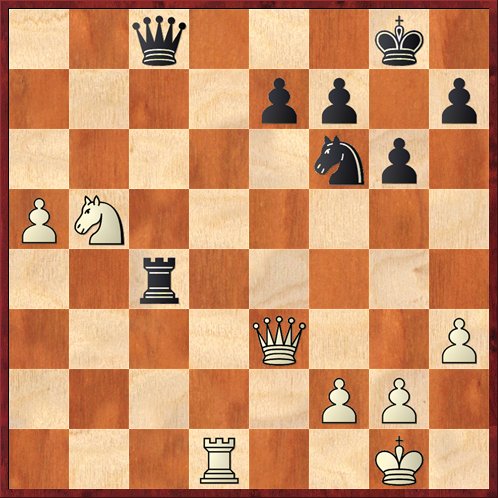
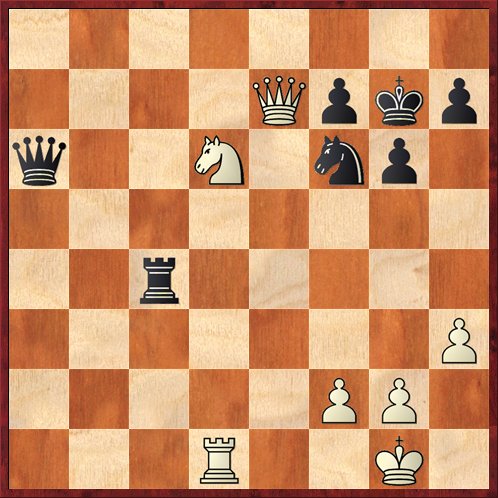

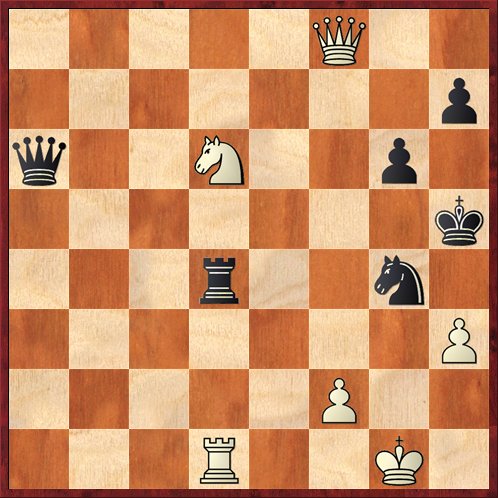

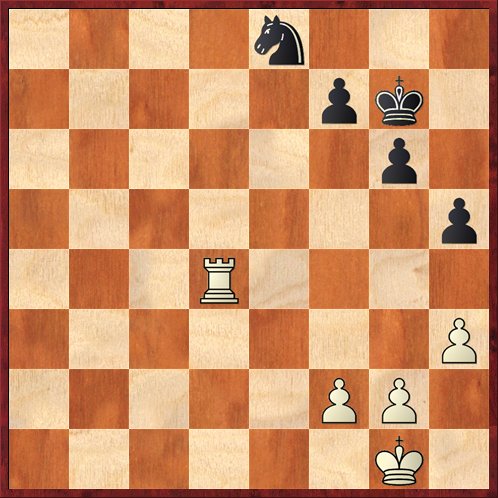
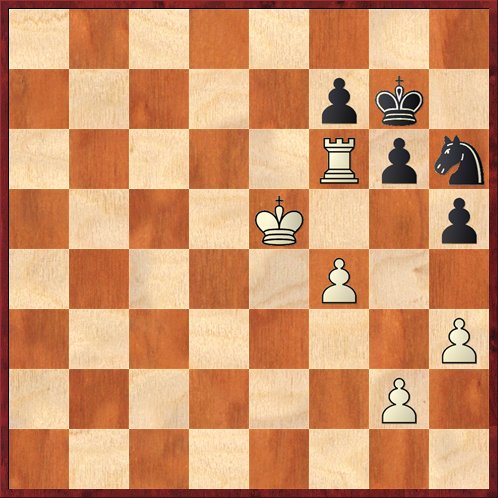



{ 4 comments… read them below or add one }
Hi Dana,
We both missed the spectacular 35. Qf3. What a beautiful move!
After looking at this for awhile I couldn’t find any way to save the game. White is not actual threatening to take the knight, the real threat is to take the rook and only then take the knight. Amazingly Black is in zugzwang.
I do have one correction. After 35 … Qd6 36. hg+ is the wrong capture. 36. Qg4+ Rg4+ 37. hg+ Kg4 38. Rd6 is a simpler win and a variation on your hook and ladder theme.
A very interesting position to analyze, and you did it so well! The ending is so important for students of the game as it includes:
1) because of the position of the pieces reached, certain pawns can be more important than others
2) complexities of an attack with queens on and pawns on one side of the board can be very complex :: safety of the king and necessity for accurate analysis when this becomes and issue
3) important ideas for how to win rook vs. knight endgames with pawns on the same side of the board
4) an understanding of king+pawn endgames in which you left it to the student to analyze some of these (as well as a couple of tactical “shots”)
Thank you for doing this Dana! 🙂
Arthur, Thanks and welcome to the blog!
Mike, Of course! 36. Qxg4+! is exactly the “scorpion’s sting at the tail end of the combination,” to quote Fischer.
Dana
Hi Dana,
You and your readers are invited to submit items to the The Best Of! Chess Blogging Carnival. Deadline is January 27. Hit the link for more details, and please post a link on your blog or chess forum.
Best regards,
Robert Pearson